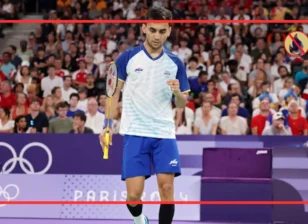France’s White Population Percentage: Exploring the Stats
France, often celebrated for its rich cultural heritage and historical contributions, has undergone a transformative journey in the realm of ethnic diversity. Understanding the dynamics of France’s white population percentage necessitates a nuanced exploration of historical contexts, policy agendas, and societal shifts. From the aftermath of World War II to contemporary discussions on immigration and citizenship. The French approach to ethnicity has been marked by distinctive features, including a deliberate avoidance of race-conscious policies.
This article delves into the intricate tapestry of France’s demographic landscape, shedding light on the complexities of ethnic diversity and the evolving narrative of the nation’s white population.
Historical Context
The end of World War II marked a significant turning point for France, both politically and demographically. The need for reconstruction led to an influx of immigrants, primarily from former colonies, to fill gaps in the labour market. This wave of migration laid the foundation for a multicultural society, challenging traditional notions of a homogenous French identity. The 1978 Law on Collection of Race-Based Data reflected an early attempt to navigate this shifting landscape by acknowledging the need for data collection while maintaining a seemingly colour-blind approach.
French Policy Agenda on Ethnic Diversity
France’s policy agenda on ethnic diversity has been characterised by a unique blend of a color-blind model and an aversion to race-conscious policies. Unlike some European counterparts, France has historically resisted categorising its population based on race, emphasising a shared national identity. The avoidance of race-conscious policies is rooted in the belief that acknowledging racial differences might undermine the notion of equality and solidarity among citizens.
The Transformation of France into a Multi-Ethnic Society
Over the decades, France has undergone a profound transformation into a multi-ethnic society. This shift has been driven not only by immigration but also by evolving societal attitudes towards diversity. While the French model of integration has often been criticised for promoting assimilation over multiculturalism, the multicultural fabric of contemporary France is undeniable. The question of how to balance unity and diversity remains a central theme in ongoing discussions surrounding French identity.
French Citizenship for Immigrants
Navigating the delicate balance between preserving a sense of national unity and recognizing the contributions of immigrants, France has grappled with the question of citizenship. The acquisition of French citizenship by immigrants has been a complex process, often requiring a commitment to assimilation and adherence to a set of cultural values. This approach has been scrutinised for potentially marginalising certain communities and perpetuating inequalities within the society.
Anti-Racist Policy in France
While officially rejecting race-conscious policies, France has not been immune to debates on racism and discrimination. Anti-racist movements have gained momentum, advocating for the acknowledgment of systemic issues and the implementation of policies addressing social inequalities. The challenge lies in reconciling the desire for equality with the need to address the specific challenges faced by marginalised communities.
Public Policies on Social Inequalities in France
France’s approach to combating social inequalities has taken shape within a broader framework, encompassing economic, educational, and healthcare policies. The focus on addressing disparities without explicitly framing them in racial terms reflects a commitment to a colour-blind model. However, critics argue that this approach may overlook the unique challenges faced by different ethnic groups, hindering the effectiveness of these policies in creating truly equitable outcomes.
French Attitude Towards the Term ‘Race’
The French attitude towards the term ‘race’ itself plays a pivotal role in shaping public discourse on ethnicity. The rejection of the concept of race as a social construct, deeply ingrained in French intellectual tradition, has influenced policy decisions and public perceptions. However, this stance has been challenged by those who argue that ignoring racial dimensions hampers efforts to address the root causes of discrimination and inequality.
Conclusion
France’s journey in managing ethnic diversity and understanding the white population percentage is a complex narrative that intertwines historical legacies, policy choices, and societal shifts. The avoidance of explicit race-conscious policies, coupled with a commitment to a colour-blind model, reflects a distinctive approach within the European context. As France continues to grapple with the multifaceted challenges posed by its evolving demographic landscape, striking a balance between unity and diversity remains a central and ongoing endeavour.





